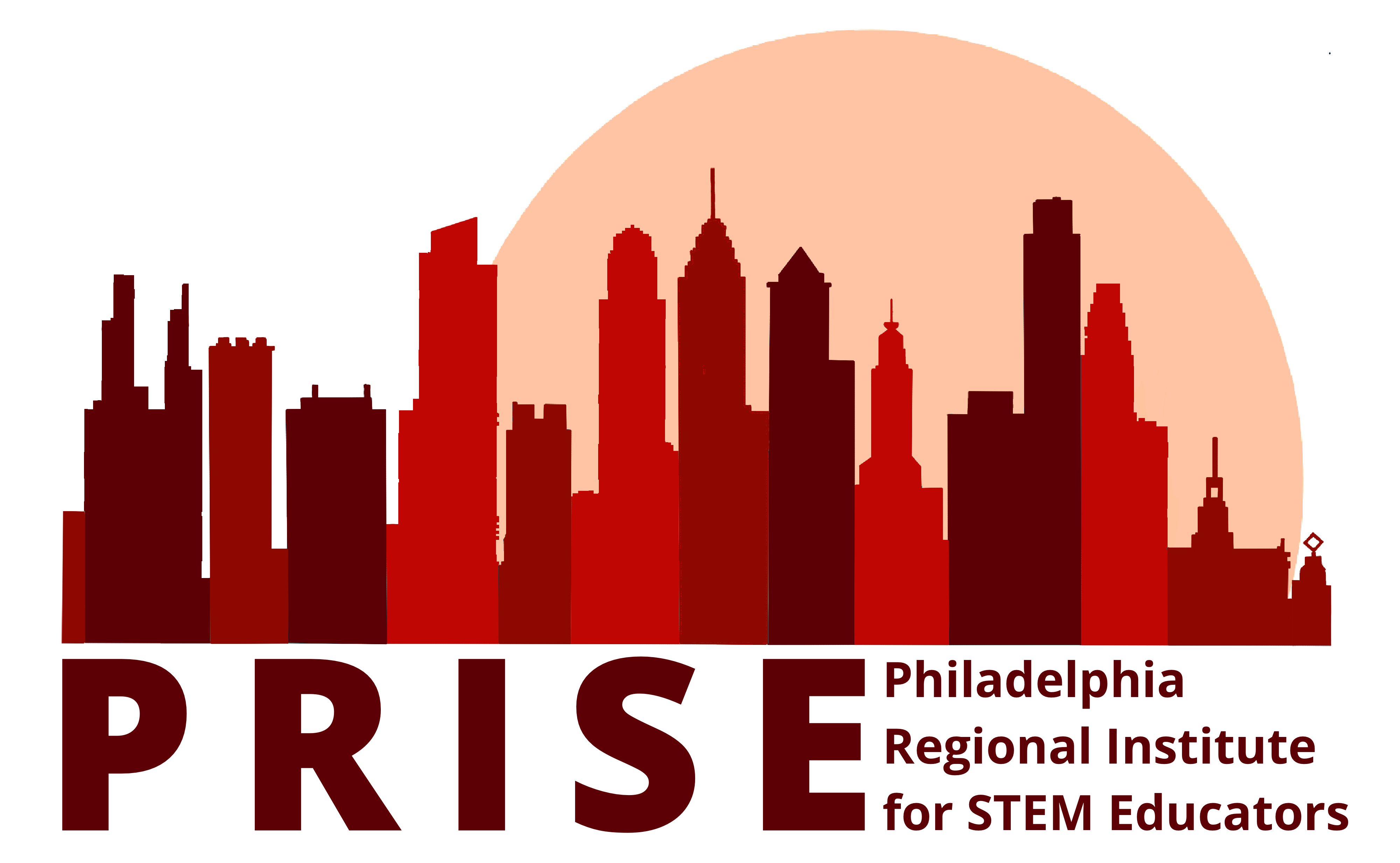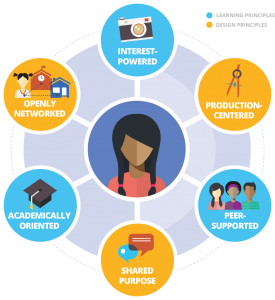It’s 4pm. Do you know where your students are?
If they are like the majority of American youth between the ages of 13-17, they are likely making, sharing, collaborating or playing with the aid of some form of socially connected technology.[1] Should we dismiss this behavior as thoughtless, mind-numbing entertainment and self-indulgence?
Recent research suggests we should not dismiss it so quickly. In a large scale study of youth learning outside of school, a team of social media scholars led by Dr. Mimi Ito at the Digital Media Learning (DML) Research Hub discovered that authentic, youth-driven, out-of-school learning does happen during these types of activities.[2]
So, can educators somehow incorporate this youth-driven learning into their own classrooms? In 2013 The team from DML sought to answer this question. They proposed a framework based on their research to re-imagine learning in the 21st century: Connected Learning. [3] Next, they joined with several education non-profits as the Connected Learning Alliance to build out the concept and put it into practice. It is now used by practitioners across the country.
For STEM educators, the Connected Learning framework has helped to transform practices, expand learning opportunities, and prepare students for STEM careers in a connected world. If you have run into terms such as “tinkering,” “makerspace,” “design thinking,” “open learning,” and “digital citizenship,” then you are already familiar with many of the concepts that relate to CL.
The Connected Learning framework is composed of three design principles and three learning principles (see infographic). According to the framework, learning experiences should be designed as openly networked, production-oriented, and with shared purposes. Also, the activities should be peer-supported, academically oriented, and interest powered. Moreover, a major goal of Connected Learning is to leverage the connectedness of the digital era to afford more equitable and empowering learning opportunities for youth.
Something Old, Something New, Something Borrowed…
The Connected Learning framework is really a marriage of progressive, critical pedagogies and social learning culture in our “Networked Society”[4]. Much of the framework is rooted in work by scholars such as Jean Piaget, Lev Vygotsky, John Dewey, Maria Montessouri, and Paulo Friere.
Yet, the framework offers several new concepts that are unique for 21st century learners.
First, the concept of “openly networked” learning, which is learning that happens “out in the open” in public, connected communities of practice either online or face to face is relatively new. While traditionally we’ve taught behind closed doors inside our classrooms, by embracing openly networked learning, educators can not only foster richer and more meaningful forms of learning but also develop students’ personal learning networks and their “social capital” to gain access to opportunities and ideas that exist beyond their immediate social circles. The Widow Mine Math project is a great example of an openly networked STEM initiative. It used an openly-networked gaming application to engage youth in studying geometry.
Another concept implicit in much of the research and examples of Connected Learning is participatory culture.[5] First coined by Media Scholar Henry Jenkins, participatory culture is meant to highlight the move away from passive “consumer” culture and to more active “creator” culture, both online and offline. You see it everywhere – Minecraft players creating their own “mods” of the game and sharing it with friends, fabrication studios and makerspaces that create opportunities for people to be producers, rather than just consumers. With more tools to create and share, young people are engaging in participatory culture outside of school through many of their activities. Teachers can leverage this new norm to create powerful learning experience by creating opportunities for students to engage in learning activities that provide enough space for students to design, craft, tinker, and produce their own work. You can learn more about makerspaces and tinkering at Maker Ed.
Finally, expertise is understood differently in Connected Learning. While our traditional paradigm of expertise emphasizes formal educational degrees, in the paradigm of an information-rich, connected world, expertise is acknowledged more by a person’s abilities and proven experience. For example, in the MIT Scratch coding community there are few adult “experts” that explain how to code, rather, kids that have proven their worth through their skill at designing code are sought out as experts. What this means is that expertise is more widely distributed and real skills matter. One outgrowth of this shift is the use of digital badges to acknowledge people with unique skill sets and build learning communities. You can see my own experiments with digital badging on my blog.
The Struggle is Real
While the Connected Learning framework offers new possibilities for engaging students in real-world, relevant, and networked learning opportunities, teachers can face challenges in adopting this framework. Some of these challenges are external (such as access to technology and navigating school policies), others are personal, requiring a shift in thinking about schooling and one’s own role as a teacher, and some are related to large-scale societal issues (such as privacy and digital footprints).
In my own research on how pre-service teachers learn about and use the connected learning framework, I’ve discovered that the external challenges are most easily faced; teachers figure out who to call on for help for technical and policy solutions pretty easily. Yet, the personal and societal challenges are not as easily surmounted.
I found that each of the teachers in my study had a significant learning curve as to how to make the leap from engaging in traditional coursework to openly networked, participatory learning. In a traditional class, a teacher gives an assignment and the students complete it and send it to the teacher for review. In a Connected Learning class, the students have the responsibility to build a community around learning – they make and share resources, give each other feedback, connect each other to information, and build broader learning networks. The instructor is thought of as a “co-learner” with their students.
For a teacher to re-situate oneself as a “co-learner,” means that one must create a more democratic learning space, and a more flexible curriculum. It means being vulnerable, and being OK with modeling how to learn from your mistakes. It means being a tinkerer, a hacker of problems, and a human-centered designer. We don’t learn this way of thinking during our teacher education – so it’s a process of re-imagining one’s own role.
You Are Not Alone: Where to find Help for Teaching Connected Learning
In my 15 years of studying teacher networks, I’ve discovered a simple truth: nothing is impossible when you have a strong network of colleagues alongside you. I’ve seen teachers change national policies, re-write curricula for their school districts, and even create their own schools with the power of organizing and collaborating.
The same is true for overcoming the challenges of learning to teach Connected Learning. There are communities – virtual and face-to-face – of passionate educators ready to collaborate and learn with each other about Connected Learning. So, to teach Connected Learning, one must, essentially, become a connected learner.
Here are a few communities to connect with if you want to learn more about Connected Learning and related approaches:
- The Arcadia Connected Learning Network – Take classes in connected learning and become a part of the Arcadia Connected Learning Network, a local node of the Connected Learning Alliance. Meet local educators that want to learn about Connected Learning, and get the opportunity to design and teach your own Connected Learning workshop through the program. (Full disclosure – I direct this program – so, it has my full endorsement!).
- #CLMOOC – “Making Learning Connected” or “Connected Learning MOOC” – began as an open, participatory MOOC in 2014, and now exists as an online hashtag community of educators that use the Connected Learning approach in their work. Follow it on Twitter or G+
- Maker Ed and Make-to-Learn – A network of Maker-educators that seek to bring production-based learning back into the classroom. There are opportunities to attend workshops and convenings on the website as well as an online G+ community for the group.
- The Annual Digital Media and Learning Conference – An annual gathering of Connected Learning researchers and practitioners. If you can’t make the event, you can check out their “TED talk”-like videos on the conference website – they are sure to inspire you – and maybe your students!
- EdCamp – A national network of teacher-led unconferences devoted to thinking about inquiry and innovation in teaching. A lot of the topics of the gatherings relate to Connected Learning topics. Local events are happening all the time. Check out the website to find the one nearest to you. Once you go, you’ll be hooked!
- The Philadelphia Education Fund Teacher Networks and STEM initiatives programs. Get on the mailing list for the Ed Fund’s teacher networks and STEM initiatives programming – you will learn about upcoming local events on innovative, teacher-led professional development.
If you decide to tinker around with Connected Learning, please share your questions, experiences, and ideas here in the comment section, or drop me a line at bakerdoylek [at] arcadia.edu.
[1] Amanda Lenhart, “Teens, Social Media & Technology Overview 2015” (Pew Research Center, 2015), http://www.pewinternet.org/2015/04/09/introduction-teens-tech/.
[2] Mizuko Ito et al., “Living and Learning with New Media: Summary of Findings from the Digital Youth Project.,” John D. and Catherine T. MacArthur Foundation, 2008.
[3] Mizuko Ito et al., Connected Learning: An Agenda for Research and Design (Digital Media and Learning Research Hub, 2013).
[4] Manuel Castells, Rise of The Network Society, vol. 1, The Information Age (Wiley, 1996).
[5] Henry Jenkins, Confronting the Challenges of Participatory Culture: Media Education for the 21st Century (Cambridge, MA: Mit Press, 2009).

